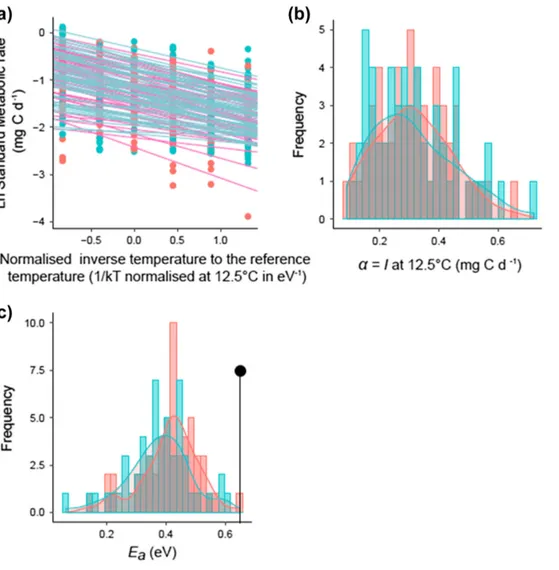Repeatable inter‐individual variation in the thermal sensitivity of metabolic rate
Texte intégral
Figure



Documents relatifs
More than half of the electron-pair production events (with tagging of only one forward- scattered primary electron) did not belong to the photon-photon collision mechanism
Here, we test for the effect of genome size on BMR, accounting for body mass, using a large sample of vertebrate species and a recently-developed regression model that
In contrast to the UTD hypothesis, we found that activation energy (i.e. slope) and metabolic expression level (i.e. intercept) of thermal reaction norms are highly variable
Four models were fitted for each predictor variable: resting metabolic rate as a main effect, body mass as a main effect, both resting metabolic rate and body mass as main effects,
This work will therefore address the synthesis of hierarchical silicalite-1 zeolite beads and hollow spheres composed of zeosil nanosheets using amorphous silica beads of 20 µm in
Figure 5: The induced 2-dimensional Ricci scalar R of the geoid 2-surface as a function of the proper longitudinal distance travelled along it starting at the North Pole, for a
No tension between pulsar timing array upper limits on the nano-Hertz gravitational wave background and assembly models of massive black hole binaries.. To cite this article:
A cage control group (CC n = 6–8, no restraint) was used to validate the test. The CC groups were not placed in the restrainers but underwent the 4 i.t. NMDA or saline